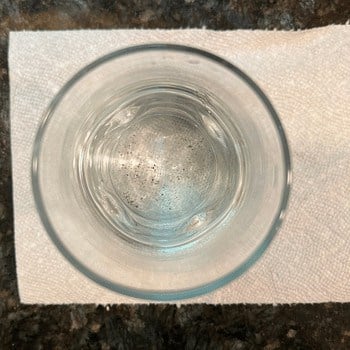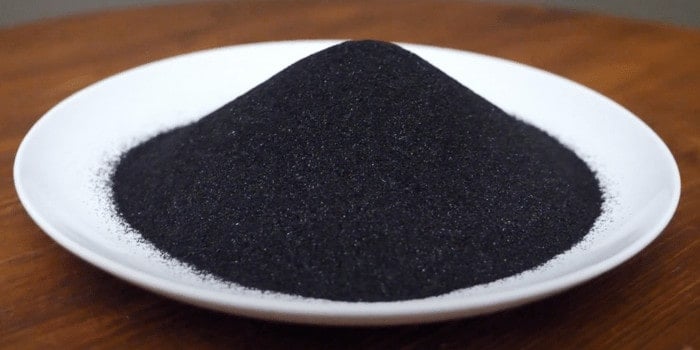Seeing little black flecks in your filtered water? You’re not imagining it — and you’re definitely not alone.
It’s a bit unsettling, especially when a filter is supposed to make water cleaner, not add odd particles to your glass. But before you toss the whole system, take a breath. In most cases, these specks aren’t dangerous — and they’re not a sign your water’s unsafe.
This quick guide will break down why those black bits show up, when it’s normal (and when it’s not), and what you can do to make them disappear for good.
👉 Curious how carbon filters work in the first place? This breakdown of activated carbon filters dives deeper.
⚡ Quick Take
- 🧱 Carbon dust is the #1 culprit – harmless, but not pretty
- 🧼 New filters need flushing – skipping this step leads to specks
- 💨 Air bubbles trap debris – soaking and tapping can help
- 🦠 Mold? Unlikely, but possible – especially with neglected filters
- 👀 Keep an eye on filter care – clean, dry, and replace on schedule for best results
🧐 What Are Those Black Specks in My Water?

Most of the time, those little black specks floating in your water aren’t anything scary. They’re usually just carbon dust — a harmless byproduct from the filter itself.
Carbon filters (especially new ones) tend to shed some particles when they’re first used.
So if you’ve recently installed a fresh cartridge, what you’re seeing is probably just loose carbon escaping into your glass. Annoying? Sure. Dangerous? Not at all.
But there are exceptions. Occasionally, black particles in water can be linked to other issues, like:
- 🧲 Iron or manganese – Can leave black or brown gunk in your sink or toilet tank.
- 🪛 Plumbing corrosion – Flaking metal or rust from older pipes might be sneaking in.
- 🦠 Filter neglect – A soggy, forgotten filter can (rarely) become a mold magnet.
- 🛠️ DIY filter mishaps – Drilled housings or swapped media can let carbon slip through.
💡 Pro Tip: If the specks only appeared after a filter change, odds are it’s just carbon dust. But if you notice slime, strange taste, or streaks in your toilet tank, it might be worth testing for iron or bacteria.
🧪 Is It Just Dust — or Something Else?

If your water looks like it has pepper flakes or a dark swirl, don’t panic. Odds are, it’s not dangerous — just carbon particles doing their thing.
There are two likely causes:
- 🟤 Carbon dust – The most common culprit, especially if you just installed or replaced a filter. It’s harmless and typically settles at the bottom of your glass.
- 🧲 Mineral particles – Iron or manganese can sometimes show up in black or brownish clumps, but they’re usually slimy or leave stains.
💡 Good to Know: If you’re using a carbon-based filter — pitcher, faucet, under-sink, or reverse osmosis — you’ll almost always get a little dust during setup. It’s normal and easy to fix.
🦠 Could Mold Be the Problem?

Let’s get this out of the way — mold in your water filter is rare, but not impossible.
If you spot black specks inside the filter housing or notice a musty smell, mold might be the issue. But if the black stuff is floating in your water? It’s almost always carbon dust — not mold spores.
Here’s what to look for:
- Mold usually grows on the filter, not in the water itself.
- It thrives in damp, dark environments, like a neglected pitcher or filter that’s overdue for replacement.
- Some filters use KDF media — a blend of zinc and copper — to help inhibit microbial growth. These filters are more mold-resistant by design.
💡 Pro Tip: If you’re worried about contamination, don’t reuse old filters — and definitely don’t buy pre-owned ones. Mold can hide in the crevices, and once it’s in, it’s tough to fully remove.
🕵️♂️ What Carbon Dust Looks Like

If your filtered water looks more like a snow globe than a clear glass, it’s probably just carbon dust — not a cause for panic.
But the type of filter you’re using can change how that dust looks (and how you fix it). Let’s break it down:
| 🔧 Filter Type | 👀 What It Looks Like | 📍 Common Locations | 🧼 How To Fix It |
|---|---|---|---|
| 🟤 Granular Carbon (GAC) | Gritty specks, like fine coffee grounds Settles at the bottom |
Faucet filters, fridge filters, pitchers | Flush the filter and discard the first batch or two of water |
| 🧱 Carbon Block | Dust-like gray sheen Floats or disperses in water |
Under-sink systems, RO pre-filters, premium pitchers | Flush thoroughly before first use |
👉 Still unsure? Here’s how to clean your water filter pitcher if you think buildup might be the problem.
What carbon dust looks like depends on the type of carbon filter it comes from. There are two types, granular activated carbon filters and carbon block filters. What’s the difference?
🧼 How to Stop Black Particles from Showing Up

Most black specks show up when you first install or replace a filter — and they’re usually just harmless carbon dust. But if they keep showing up after the break-in period, it could point to a filter issue or user error. Here’s a breakdown of the most common causes and easy ways to fix them 👇
| ⚠️ Cause | 🔧 Quick Fix | 💡 Pro Tip |
|---|---|---|
| Not Soaking the Filter Dry filters shed more carbon. |
Pre-soak or flush per manufacturer instructions. | Discard the first 2–3 batches of filtered water. |
| Trapped Air Air bubbles hold loose granules inside. |
Tap gently and re-soak the cartridge until it sinks. | Check for floaters in a bowl of water — if it floats, there’s air inside. |
| Reusing Filters “Refilling” or bleaching filters can damage them. |
Always use a new, sealed filter — never DIY a refill. | Expired filters can crack and leak carbon. |
| Old or Worn-Out Cartridge Overused filters can break down. |
Replace filters on schedule — don’t stretch lifespan. | Set a reminder based on gallons used or months passed. |
Even the best filters shed a little carbon dust now and then — especially during setup. But if you’re seeing persistent black specks in your water, it’s usually a sign your filter wasn’t flushed properly or it’s past its prime. A quick soak, swap, or sanity check can usually clear things up in no time.
💡 Bottom line: A little carbon dust is harmless, but consistent specks are your filter’s way of asking for attention.
❓ Still Got Questions

❓ Can I give filtered water with black specks to pets?
Yes — especially if it’s carbon dust, which is harmless. Dogs and cats may not even notice. Just avoid letting sediment build up in small pet fountains or hamster-style dispensers where clogs can happen.
❓ What’s the best way to store extra filters to avoid mold?
Keep unopened filters in a cool, dry place, ideally inside an airtight container with a desiccant packet. Avoid humid spots like under the sink or next to your dishwasher — those are mold magnets.
❓ How do I know if my filter is certified safe?
Look for NSF certification — it’s the gold standard. Filters labeled NSF 42 or 53 are tested for both material safety and actual performance. If it’s not certified and the brand won’t disclose materials? That’s a red flag.
 169 people found this helpful. Was this guide helpful to you?
169 people found this helpful. Was this guide helpful to you? 

